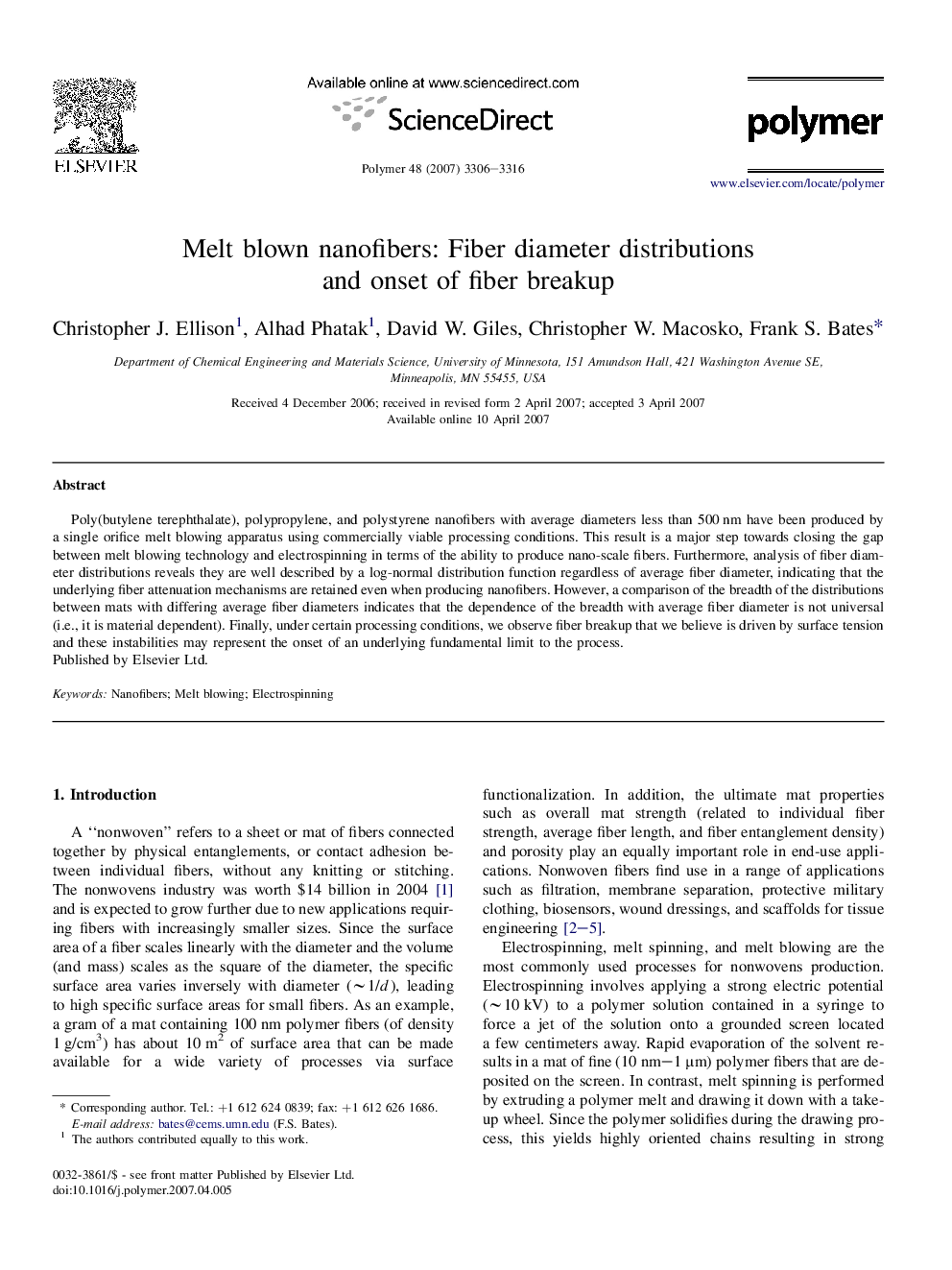| Article ID | Journal | Published Year | Pages | File Type |
|---|---|---|---|---|
| 5187995 | Polymer | 2007 | 11 Pages |
Abstract
Poly(butylene terephthalate), polypropylene, and polystyrene nanofibers with average diameters less than 500Â nm have been produced by a single orifice melt blowing apparatus using commercially viable processing conditions. This result is a major step towards closing the gap between melt blowing technology and electrospinning in terms of the ability to produce nano-scale fibers. Furthermore, analysis of fiber diameter distributions reveals they are well described by a log-normal distribution function regardless of average fiber diameter, indicating that the underlying fiber attenuation mechanisms are retained even when producing nanofibers. However, a comparison of the breadth of the distributions between mats with differing average fiber diameters indicates that the dependence of the breadth with average fiber diameter is not universal (i.e., it is material dependent). Finally, under certain processing conditions, we observe fiber breakup that we believe is driven by surface tension and these instabilities may represent the onset of an underlying fundamental limit to the process.
Related Topics
Physical Sciences and Engineering
Chemistry
Organic Chemistry
Authors
Christopher J. Ellison, Alhad Phatak, David W. Giles, Christopher W. Macosko, Frank S. Bates,
